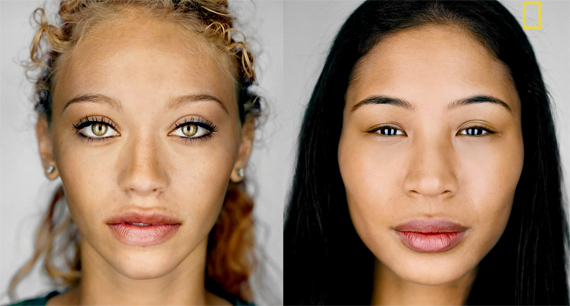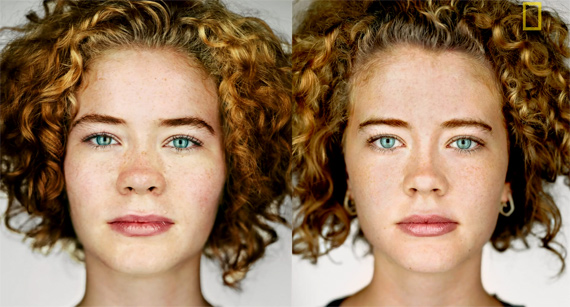Martin Schoeller is famed for his stunning close-up portraits, but he says that’s not because he possesses the innate ability to coach his subjects to pose like trained models and or possesses any special artistic talent. Instead, Schoeller’s portraiture is successful because he conducts his photoshoots with three basic principles in mind:
- Make it easy for the subject to relax.
- Shoot the in-between moments, when it’s most authentic.
- Come in close so that only the subject’s face matters.
In this interview, Schoeller sits down with National Geographic to discuss this three-tiered shooting process, as well as the rich philosophy behind his work:
Schoeller’s basic advice for portrait sessions is for photographers to do whatever they can to make photoshoots feel more like casual conversations. That’s the only way to get away from those perfect, practiced smiles and into the realm of authenticity, where subjects actually look human.
“It’s always these in-between moments that I’m trying to capture,” Schoeller said, “when it feels intimate, when they’re not taking on any trained expression, when they’re more raw and unexpected, when they kind of forget that they’re being photographed for a moment.”
Another defining feature of Schoeller’s work is that he often throws the standard, torso-up portrait formula out of the window and instead takes very close-up headshots.

His thinking is two-fold. First, close-up portraits feel more intimate than portraits drawn farther away because they allow viewers to really examine subjects’ physical features and expressions. Second, close-up portraits minimize dehumanizing distractions, such as clothing and social status, that can hinder viewers from relating to portrait subjects in that way.
“I always felt like [the close-up portrait] was the most essential, the most valid picture out there,” Schoeller said. “It was just all about the person—not about their clothes, not about the environment, not about their background, not giving any hints to their social status.”
Schoeller’s portraiture uniquely promotes equality by encouraging viewers to celebrate subjects as humans beyond the cultural noise—to actually see each subject, celebrating eyes and lips.
Like This Article?
Don't Miss The Next One!
Join over 100,000 photographers of all experience levels who receive our free photography tips and articles to stay current:







Could NOT agree MORE! The examples in this article prove that, we don’t know anything about the subjects other than their beauty. Personally, that is what I am to capture when I shoot someone’s portrait, I want to capture who they are, not the distractions.
Wonderful interview, wonderful article.
Couldn’t agree more with Martin on the 3 basic principles for taking successful portraiture. I have come to realize that the more comfortable the subject is, the more natural and captivating the picture is.